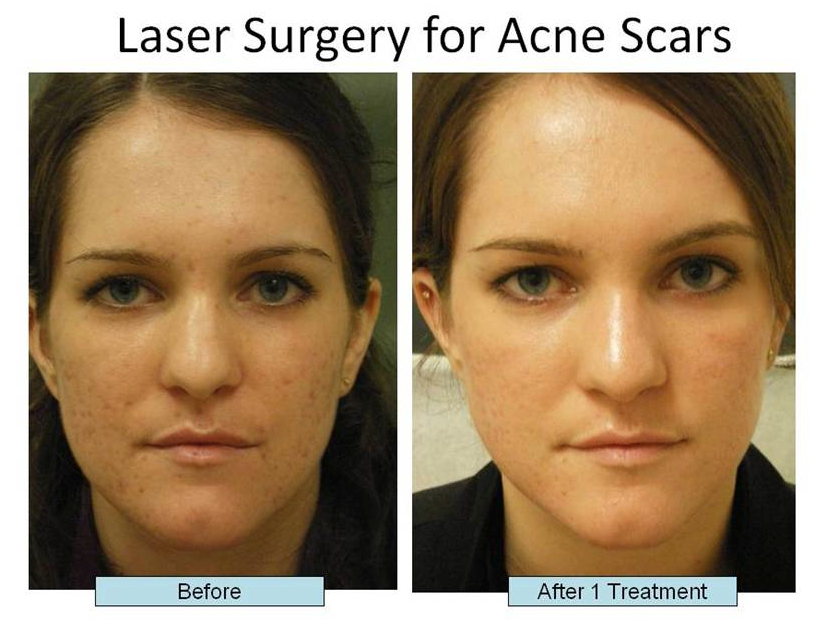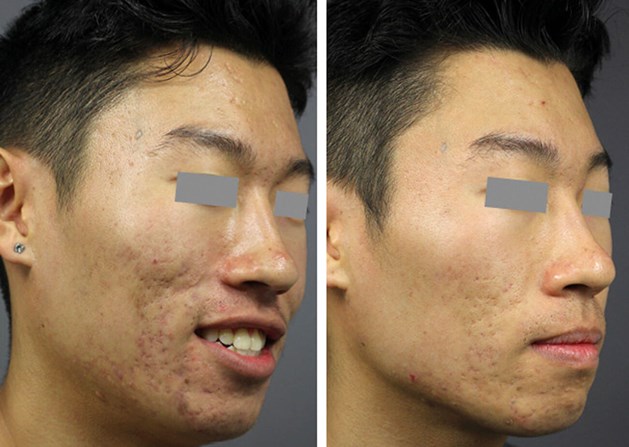Reliable Acne and Acne Scars Treatment: Clear Skin Solutions That Job
Wiki Article
Exploring Skin Problem: Recognizing and Dealing With Acne Scars for Healthier Skin
Acne scars stand for a significant worry for people seeking to keep healthy skin, as they can influence both appearance and self-worth. Understanding the different kinds of scars, from atrophic to hypertrophic, is crucial for figuring out appropriate therapy alternatives.Understanding Acne Marks
Recognizing acne marks is important for any person who has experienced extreme acne, as these marks can have a lasting influence on both physical look and psychological wellness. When the skin goes through inflammatory feedbacks throughout active acne lesions, acne scars create. The extent of scarring is frequently influenced by aspects such as the sort of acne, its period, and specific skin characteristics.The body's natural healing process can lead to either atrophic scars, which look like anxieties in the skin, or hypertrophic scars, which are increased and arise from overflow of collagen. Furthermore, the emotional toll of acne scars must not be taken too lightly; several people report sensations of shame, anxiety, and lowered self-esteem. This psychological worry can influence social communications and total lifestyle.
Addressing acne marks calls for a thorough understanding of their development and influence. Understanding of the possibility for lasting effects connected with without treatment scars can motivate individuals to look for proper therapies. Early intervention and effective monitoring approaches can dramatically improve skin look and boost psychological resilience, emphasizing the value of comprehending the complexities bordering acne marks.
Types of Acne Scars
Acne marks can be classified right into distinct kinds, each displaying distinct qualities and calling for specific therapy techniques. The primary kinds of acne scars include atrophic, hypertrophic, and keloid marks.
Hypertrophic marks, in contrast, are increased over the skin degree and are the outcome of excessive collagen production throughout the recovery process. They typically remain within the limits of the initial acne sore. Keloid marks are comparable but prolong beyond the initial injury website, creating bigger, raised areas that can be uncomfortable or scratchy.
Recognizing these types of marks is essential for selecting suitable treatment choices. Different scars may react far better to details treatments, such as laser therapies, fillers, or medical treatments, stressing the value of a tailored method to acne scar management.
Identifying Your Marks
Acne scars typically drop right into two groups: atrophic and hypertrophic marks. These can further be classified right into ice-pick scars, boxcar marks, and rolling scars, each showing unique qualities and requiring various methods for assessment - skin rejuvenation treatments.Hypertrophic marks, on the other hand, are increased and occur as a result of extreme collagen production during the recovery process. Identifying the certain attributes of your marks-- such as structure, deepness, and width-- is essential for appropriate recognition. Furthermore, take into consideration the distribution of marks across your skin, as this can show the severity and duration of the acne problem.
Engaging with a dermatologist can provide important understandings into the nature of your scars, helping in the differentiation between numerous types. A thorough understanding of your scars will eventually bring about a more click now tailored and efficient therapy plan, guaranteeing a clearer and much healthier skin.
Therapy Options Offered
Determining the details kind of acne scars present on your skin prepares for discovering reliable treatment options. Typical types of acne scars include atrophic (clinically depressed), hypertrophic (elevated), and post-inflammatory erythema.For atrophic marks, choices such as chemical peels, microneedling, and laser resurfacing are commonly utilized. Chemical peels make use of acids to eliminate the outer layer of skin, advertising brand-new cell development.
Hypertrophic marks can be treated with corticosteroid injections to squash the mark or laser treatment to lower inflammation and enhance appearance. acne scars treatment. Silicone gel sheets and pressure dressings might likewise help in managing raised marks
Additionally, dermal fillers can briefly complete anxieties from atrophic scars, while surgical excision might be proper for serious cases. Each treatment option has its advantages and considerations, making it important to seek advice from a skin specialist. They can offer personalized referrals based on the type and intensity of your marks, in addition to your skin type and total health and wellness.
Tips for Prevention
Reliable prevention techniques can significantly decrease the probability of creating acne scars. The very first step is to keep a constant skincare regimen that includes mild cleansing, peeling, and moisturizing. Utilizing non-comedogenic products aids avoid clogged up pores, which can intensify acne. In addition, integrating topical therapies including salicylic acid or benzoyl peroxide can effectively take care of breakouts and lessen inflammation.Avoiding the desire to stand out or select acne sores is important, as this can bring about deeper skin damage and raise the risk of scarring. Instead, take into consideration making use of a cold compress or over the counter therapies to lower swelling and redness.
Sun security is an additional vital aspect of prevention; ultraviolet (UV) rays can darken marks and prevent the healing process. Applying a broad-spectrum sunscreen with at the very least SPF 30 daily can safeguard the skin and promote also recovery.
Last but not least, maintaining a well balanced diet plan abundant in see antioxidants, minerals, and vitamins supports skin health and wellness and healing. Remaining hydrated and handling tension degrees can likewise play a significant role in reducing acne flare-ups. By executing these approaches, individuals can dramatically reduce their opportunities of you can look here developing acne scars.

Verdict
In conclusion, understanding and determining acne scars is essential for effective therapy and accomplishing healthier skin. Various kinds of acne marks, including atrophic and hypertrophic marks, require particular interventions customized to private needs.
The body's natural healing procedure can result in either atrophic scars, which show up as anxieties in the skin, or hypertrophic scars, which are increased and result from overproduction of collagen. They are more split into 3 subtypes: ice pick marks, boxcar scars, and rolling scars. Acne scars generally drop into 2 classifications: atrophic and hypertrophic marks. These can even more be identified into ice-pick marks, boxcar scars, and rolling marks, each showing unique characteristics and calling for different techniques for evaluation.
Numerous kinds of acne marks, including hypertrophic and atrophic marks, require specific interventions customized to individual demands.
Report this wiki page